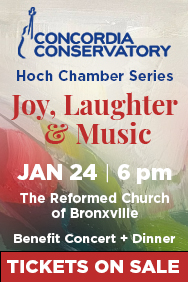From the Mayor: History of Celebrating a New Year

By Mary Marvin, Mayor of Bronxville
Jan. 5, 2022: In Village government we have two “new years” in a sense – the traditional one where we gather together to discuss long-range projects and to prioritize our major capital projects for the year, and then again on June 1 when the budget is solidified for the new Village fiscal year and we see just what level of monies are available to implement our programs.
As you know from my columns, I’m always fascinated by the rituals of holidays and new beginnings so I thought I would delve into the background of the tradition of celebrating a new year.
Early Egyptian, Babylonian and Chinese civilizations all had rituals to mark the beginning of a new year. As early as 3000 BC, Egyptians heralded the beginning of the new year with a festival, not on January 1, but tied to the annual flooding of the Nile River, around mid-July. The holiday celebrated fertility and rebirth and was religiously solemn as well as secularly festive. The ancient Babylonians held a 12 day feast to celebrate the beginning of the agricultural season right around the spring equinox and the earliest Chinese new year celebrations started more than 3000 years ago; they likewise were tied to the spring planting season.
New Year’s began being celebrated on January 1 thanks to the ancient Romans. When Julius Caesar revamped the calendar in 45 BC, adding leap years to compensate for the inconvenient fact that the earth’s rotation around the sun takes 365.24 days and not an even 365 – the resulting Julian calendar established January 1 as the first day of the year. Previously it had been tied to the vernal equinox in March. January’s name appropriately was derived from Janus who was the god of new beginnings adorned with two faces so the dawn of the new year was tied to both looking back at the old and ahead to the new. Romans celebrated January 1 by giving offerings to the god Janus and exchanging gifts of figs and honey.
January 1 did not remain the start of the new year everywhere for long. Throughout the middle ages, the new year was celebrated at different times in different places, most often again near the spring equinox.
When Pope Gregory the XIII tweaked the Julian calendar in the late 16th century, his Gregorian calendar also set January 1 as the start of the new year. But the Protestant British and subsequently the American colonies resisted this Catholic invention and continued to celebrate the New Year in March. This lasted until 1752 when the British and the colonists finally gave in and adopted the Gregorian calendar.
While revelry has become a global thread as the old year gives way to the new, predictably customs vary widely depending upon where you happen to be celebrating. In Spain, revelers down a dozen white grapes in quick succession as the clock strikes midnight, one for each month of the year.
The Japanese enjoy soba noodles, Italian and Chilean eat lentils, which are thought to resemble coins and thus herald future financial success and Greeks eat cake with a coin baked inside which bestows blessings on whoever draws the lucky slice.
The practice of making resolutions first started with the ancient Babylonians who made promises to curry the favor of the gods. (They would reportedly also vow to pay off debts and return borrowed farm equipment.)
Ever since 1904, the most iconic celebration of New Year’s Eve has been in Times Square in New York City. The first celebration commemorated the official opening of the new headquarters of the New York Times newspaper. Founder Adolph Ochs spared no expense as he underwrote a large festival and fireworks said to be heard as far as Croton on Hudson. After the New York City Fire Department soon disallowed the massive fireworks display, he chose the symbolic dropping of the ball. What started as a humble cast iron structure is now a 10,000 pound mirrored sphere festooned with Waterford crystal. Auld Lang Syne, the tune most associated with the beginning of the new year, is actually a musical adaptation of Robert Burns’ Scottish poem brought to popularity by Canadian band leader Guy Lombardo and his Royal Canadian Orchestra which were featured yearly at Times Square.
Though Bronxville has no community commemoration, I am sure everyone has the same feeling as the trustees – looking back and looking forward in the spirit of the meaning of January. As a government, we accomplished many things last year and I like to think we are trying to emulate the venerable Harry S. Truman who said, “It is amazing what you can accomplish if you do not care who gets the credit”, so it is time to move forward.
Please join us at our January Board of Trustees meeting and share your thoughts as we prioritize initiatives for Bronxville 2022 and Happy New Year!!
Government & History Directory
Bronxville is a quaint village (one square mile) located just 16 miles north of midtown Manhattan (roughly 30 minutes on the train) and has a population of approximately 6,500. It is known as a premier community with an excellent public school (K-12) and easy access to Manhattan. Bronxville offers many amenities including an attractive business district, a hospital (Lawrence Hospital), public paddle and tennis courts, fine dining at local restaurants, two private country clubs and a community library.
While the earliest settlers of Bronxville date back to the first half of the 18th century, the history of the modern suburb of Bronxville began in 1890 when William Van Duzer Lawrence purchased a farm and commissioned the architect, William A. Bates, to design a planned community of houses for well-known artists and professionals that became a thriving art colony. This community, now called Lawrence Park, is listed on the National register of Historic Places and many of the homes still have artists’ studios. A neighborhood association within Lawrence Park called “The Hilltop Association” keeps this heritage alive with art shows and other events for neighbors.
Bronxville offers many charming neighborhoods as well as a variety of living options for residents including single family homes, town houses, cooperatives and condominiums. One of the chief benefits of living in “the village” is that your children can attend the Bronxville School.
The Bronxville postal zone (10708, known as “Bronxville PO”) includes the village of Bronxville as well as the Chester Heights section of Eastchester, parts of Tuckahoe and the Lawrence Park West, Cedar Knolls, Armour Villa and Longvale sections of Yonkers. Many of these areas have their own distinct character. For instance, the Armour Villa section has many historic homes and even has its own newsletter called “The Villa Voice” which reports on neighborhood news.
Link to Village of Bronxville One Square Mile Monthly Newsletter
Village of Bronxville Administrative Offices
337-6500
Open 9:00am - 4pm excluding holidays and weekends
Bronxville Police Department
337-0500
Open 24 hours
Bronxville Parking Violations
337-2024
Open 9:00am - 4pm excluding holidays and weekends
Bronxville Fire Deparment
793-6400












